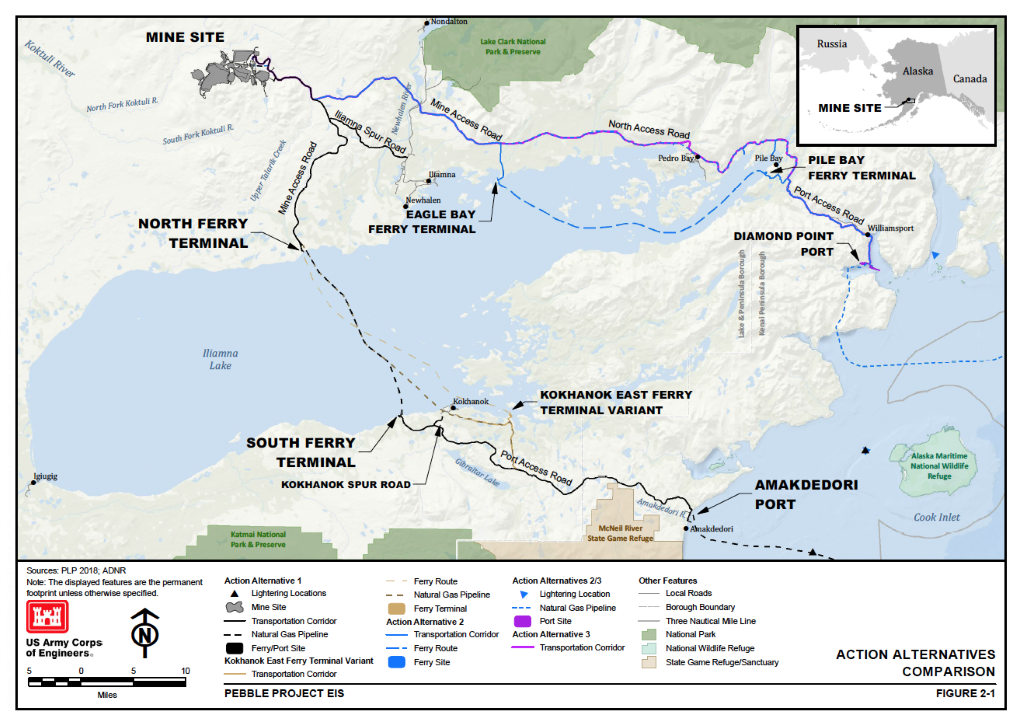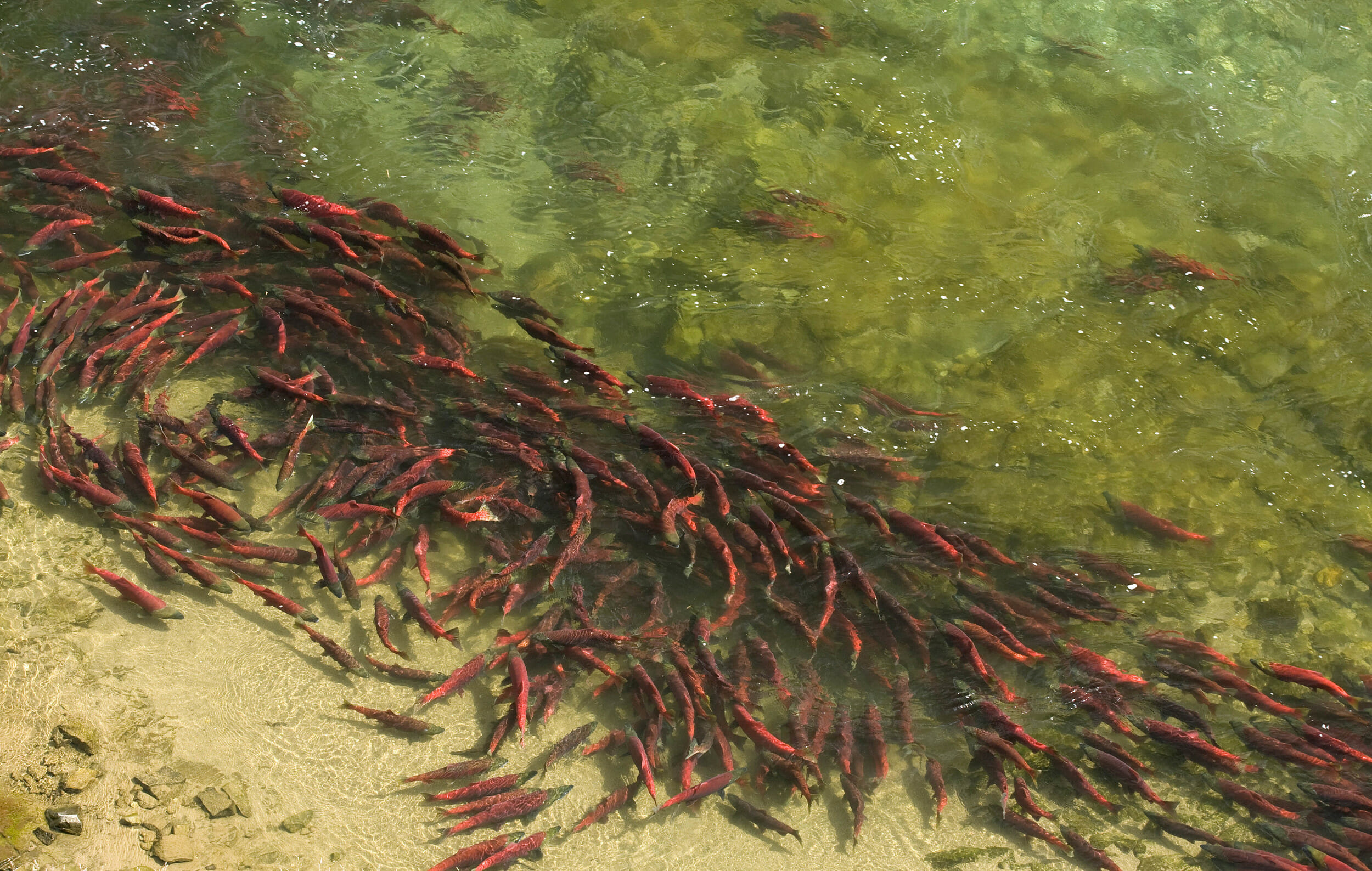Photo by Ben Knight
I don’t enjoy politics. I pay attention to the best of my ability, but life and enjoying the wild offerings of this world comes first. My love for fishing, and the wild places it brings me, pushes me into advocacy and ultimately getting entangled in some of the inescapable politics associated with fish habitat conservation. I guess it’s the price to pay for defending what you love.
Here in Alaska, I know I’m not alone. During routine outreach at Sportsman Shows, Fishing Film Fests, or wherever the anglers are, our action takers routinely tell me, “I don’t do politics, but this stupid mine is different.” The mine they are referring to is the proposed Pebble Mine in the Bristol Bay region of Alaska, and yes, it is a stupid idea.
What makes Pebble different? Size, type and location.
Size: The Pebble mine would be one of the largest open pit gold and copper mines in the world and multiple times larger than every hard rock mine in Alaska combined.
Type: This would be an open-pit mine, recovering low-grade copper, gold and molybdenum. It would create a mountain of overburden containing the exact ingredients to produce sulfuric acid and result in a massive toxic tailings pond that will require intense water treatment and maintenance forever.
Location: Pebble is proposed in the sensitive upper reaches of the Nushagak and Kvichak Rivers, Alaska’s most valuable salmon rivers. The fact that Pacific wild salmon runs have been driven to extinction or impairment and are supplemented by hatcheries throughout much of their native range makes this location all the more egregious.
The impacts of the Pebble mine are also not limited to the mine pit and the downstream waters and habitat. The Pebble deposit is in the Alaskan bush. Roads do not go there; infrastructure is limited and currently can’t even come close to supporting a mega mine. This means that there is a whole heck of a lot of infrastructure that needs to be built in order to access the mine site, support routine operation of the mine, and export of the minerals. Once this infrastructure goes in, millions of acres of nearby mining claims become viable for development.
Pebble’s own map is below, and just one quick look will show you the mine is not the innocent, small mine the Canadian-owned company routinely attempts to make it look like. Those “small mine” arguments are all product of an expensive public relations strategy to gain public support, which is virtually non-existent.
Beyond the mine site, which would fully remove 80-plus miles of salmon streams and 3,500 acres of wetlands, Pebble’s proposal includes:
- 83 miles of private road bisecting a brown bear migration corridor and crossing over 200 salmon streams, blocking or degrading mass amounts of fish habitat.
- Year-round icebreaking ferry on Lake Iliamna where a genetically distinct population of freshwater ringed seal resides.
- A deep-water port at Amakdedori Bay on Cook Inlet, which is home to critical habitat for endangered beluga whales.
- And a 270-megawatt power plant and 188-mile natural gas pipeline, which will tap into the, currently, inexpensive energy supply for residents of Southcentral Alaska.
It is well known that Bristol Bay’s growing tourism economy is fueled by the wild nature of the region and the addition of Pebble’s infrastructure will immediately tarnish the very character that attracts visitors from around the world to the area, which may spell disaster for our friends in the sportfishing and bear-viewing industries before the mine is even operating.
Pebble Limited Partership has yet to conduct any scientific research on the transportation corridor associated with their plan. This means that the U.S. Army Corps of Engineers doesn’t have the information necessary to weigh the full environmental impacts from the mine in the draft Environmental Impact Statement that they are accepting comment on until July 1. The Army Corps has also not required Pebble to provide this data, along with an economic feasibility study and details on inevitable mine expansion (see more issues with the DEIS here). These are just some of the stale breadcrumbs being left behind in a permitting process that is being excessively rushed and is anything but rigorous, putting the health of Alaska’s most productive, and lucrative, fishery in jeopardy.
Pebble Mine would not simply be an open-pit mine. More accurately, the Pebble Mine would be a twisted serpent of ecological and irreparable impact culminating at the head with one the largest mines in the world and fangs full of toxic tailings and sulphuric acid for venom. Help stop the snake before it bites us. Please comment today.
P.S. The Bristol Bay region is a wild and special place. Unfortunately, majority of Americans, and even Alaskans, will ever see this area in person. To catch a glimpse of this unperturbed region and its wild rivers, take a trip down the Koktuli River, straight out of the Pebble mine site in Koktuli Wild with Mountain Mind Media.




